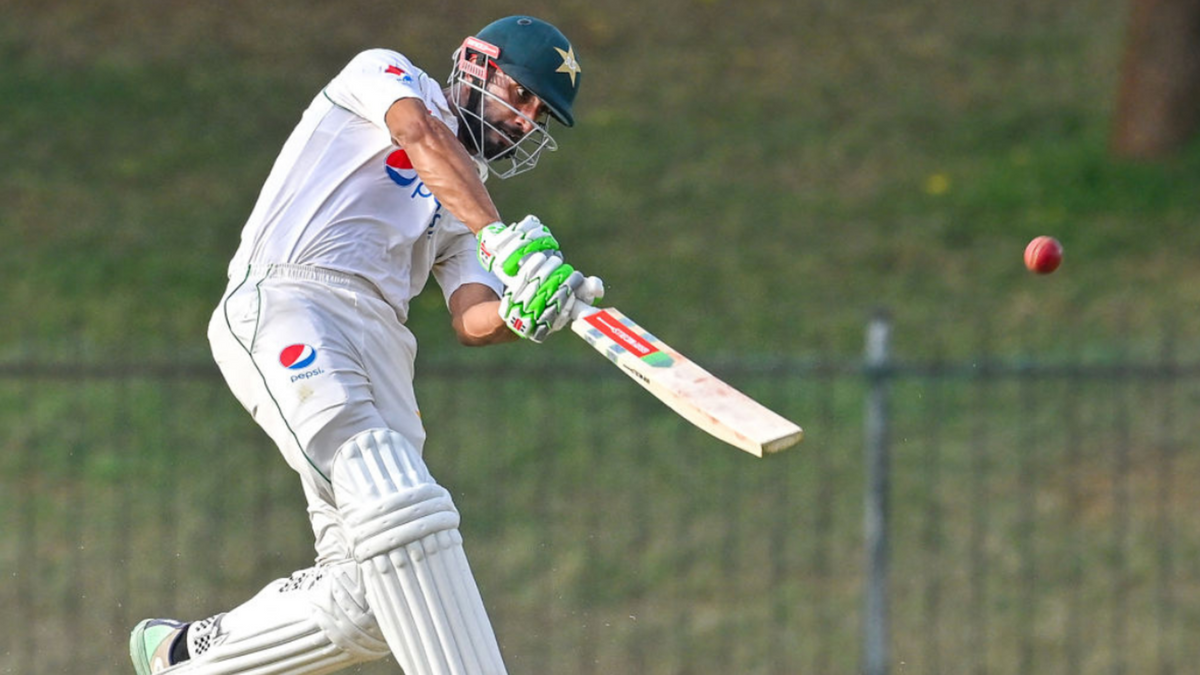
In the first innings of the ongoing Test between Sri Lanka and Pakistan at Galle, Pakistan batted at an uncharacteristically quick pace. This, along with other relevant events from the game, might indicate that they are evolving as a Test team.
Subscribe to the Wisden Cricket YouTube channel for post-match analysis, player interviews, and much more.
Pakistan won just four games in the last edition of the World Test Championship. Only Bangladesh won fewer Test matches in the entire cycle. Especially dismal was their performance at home, where they did not win a single game out of eight.
Their inability to identify their own strengths was a major factor behind their poor record at home. They prepared flat surfaces for almost all of their home games. While their batters scored big runs, the opposition would score them quicker and come out on top.
Pakistan’s batting run rate in the 2021-2023 World Test Championship cycle was 2.99, the third-lowest of all teams. At home, it increased marginally to 3.04, but remained the third lowest. They conceded 3.54 an over (3.87 at home): both numbers were the worst among the nine teams.
With results not going their way and teams around the world slowly but steadily waking up to England’s famed Bazball methods, Pakistan needed to change something. And they did.
By stumps on day two of the Galle Test between Sri Lanka and Pakistan, the visitors had scored 221-5 from 45 overs, at a run rate of 4.91. In the entire duration of the previous World Test Championship cycle, they had scored at more than four an over only once, in Kingston against the West Indies in 2021. In the subcontinent, they had scored at more than four runs per over only once since July 2015 – against Sri Lanka in Karachi in 2019.
[breakout id=”0″][/breakout]
Shan Masood, the stylish left-hander who batted at three in the first innings and was at the forefront of leading Pakistan’s charge on day two with a 30-ball 39, spoke after play on how the team has made a conscious decision to score quick runs.
“The last Test cycle gave us a big reflection, and this management was very firm that one of the things that was lacking with us not winning Test matches or not finishing off Test matches was that we weren’t scoring at such a high rate as our opposition, and that’s what put us back (behind) in the game. So there has been a concentrated effort (to score quicker),” said Masood.
[breakout id=”1″][/breakout]
The concentrated efforts Masood referred to were visible in the way the Pakistan batters chose their scoring options. They took a lot more risks, not being afraid to go aerial from time to time. However, that was not the only type of risk they took.
The right-handers attacked Prabath Jayasuriya, Sri Lanka’s frontline left-arm spinner, repeatedly against the turn, through mid-wicket. Babar Azam, Sarfaraz Ahmed, and Salman Agha all stepped out at least once to drive or flick Jayasuriya through the vacant mid-wicket region.
Sarfaraz swept as well, and while it gave him a boundary off his very first ball, it also led to his dismissal off his very last, again emphasising how Pakistan were not afraid to go for their shots, even if they might have been one too many.
[breakout id=”2″][/breakout]
If they got close to the Sri Lankan total on day two, they overhauled it and left it far behind on Day three courtesy of a stoic Saud Shakeel double century. The innings run rate dropped below four by the time it finished as Shakeel and the tailenders focused on stretching it out to get as many runs as possible over doing them as quickly as possible once they were on top.
An incredible first double-century in Test cricket for Saud Shakeel!
What an innings 🔥#SLvPAK pic.twitter.com/g828WBkZ9B
— Wisden (@WisdenCricket) July 18, 2023
With more than two days left in the Test match, it was a wise decision that showed that while they might be making conscious efforts to bat quicker, they are also willing to respond and adapt to situations.
The decision to increase their scoring rate is not the only out-of-the-comfort-zone move that Pakistan have tried of late. On day one of the Test match, their seamers resorted to bowling short with fielders on either side of the wicket stationed for pulls, hooks, and cuts. For a team whose fast bowlers have dismantled oppositions with swing – conventional and reverse – for generations, this was another example of how them being willing to try out different paths to reach a different destination from the one they have been reaching lately in Test cricket.
Their borderline nonsensical declaration against New Zealand just two Test matches ago, where they set a target of 138 in 15 overs, provided a glimpse into how Pakistan were desperately looking for ways to change things up.
As their 2023-2025 World Test Championship campaign has begun in Galle against Sri Lanka, they might just have found the right way to go about doing that.








